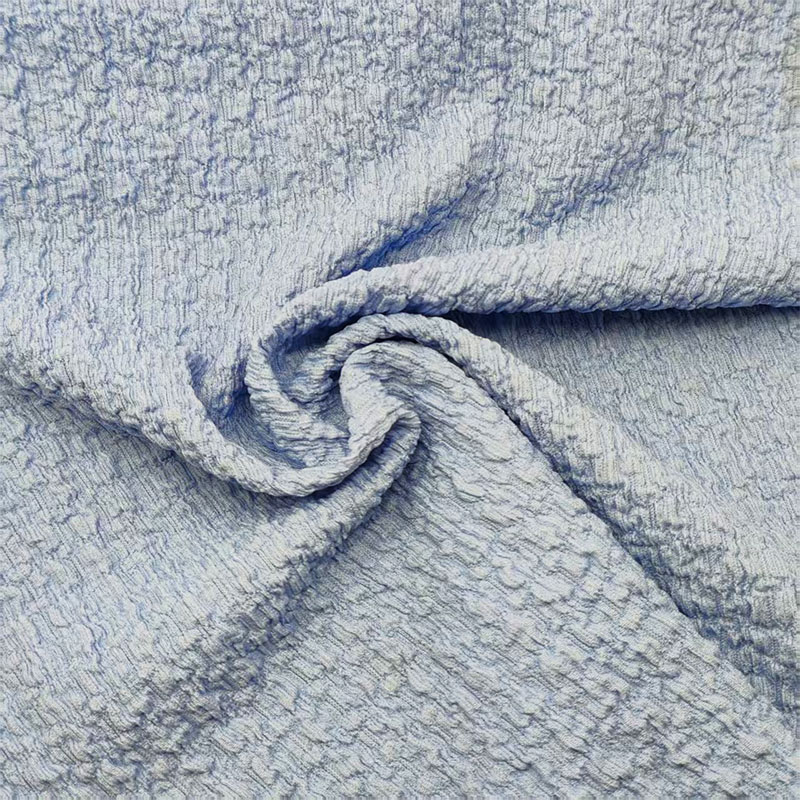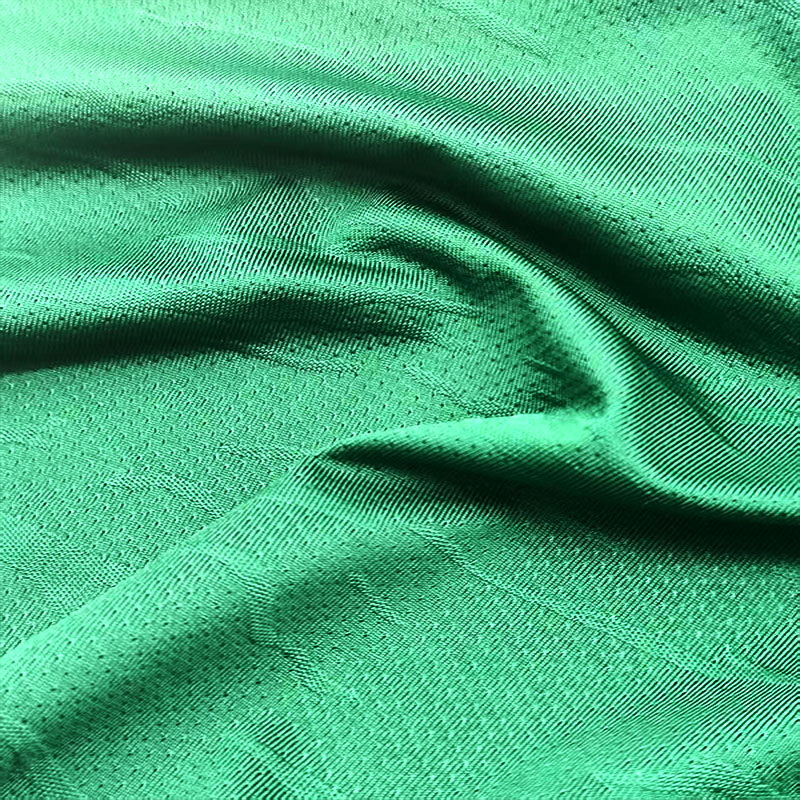For fashion manufacturers, choosing the right stretch fabric is a make-or-break decision—it directly impacts production costs, product quality, and customer satisfaction. Among the most popular options, polyester spandex fabric stands out for its balance of stretch, affordability, and practicality—but how does it stack up against other common stretch blends like cotton spandex, nylon spandex, or rayon spandex? This article breaks down a side-by-side comparison of polyester spandex fabric and its alternatives, focusing on three critical factors for manufacturers: cost efficiency, long-term durability, and wearer comfort. Whether you’re producing activewear, casual basics, or intimate apparel, this analysis will help you make data-driven choices that align with your budget and product goals.
Cost Comparison: Polyester Spandex Fabric vs. Other Stretch Blends
Cost is a top priority for fashion manufacturers, especially those scaling production or targeting mid-to-entry price points. Here’s how polyester spandex fabric competes with other stretch options (based on 2024 global textile market data):
Polyester Spandex Fabric: The Budget-Friendly Workhorse
On average, polyester spandex fabric (with a 85% polyester + 15% spandex blend, the most common ratio for stretch applications) costs $2.50–$4.00 per yard. Its lower price stems from two key factors:
- Abundant raw materials: Polyester is derived from petroleum byproducts, which are widely available and less susceptible to seasonal price fluctuations compared to natural fibers.
- Efficient production: Polyester fiber spinning and blending with spandex require fewer water and energy resources than processing natural fibers, reducing manufacturing costs.For manufacturers producing high-volume items (e.g., basic leggings, casual t-shirts, or children’s activewear), this cost advantage translates to higher profit margins or more competitive retail pricing.
Cotton Spandex: Higher Cost for Natural Appeal
Cotton spandex (typically 90% cotton + 10% spandex) ranges from $3.80–$6.50 per yard—30–60% more expensive than polyester spandex fabric. The premium comes from:
- Cotton’s variable supply: Cotton prices are influenced by weather (e.g., droughts, floods), pest infestations, and global trade policies, leading to frequent price volatility.
- Water-intensive processing: Cotton requires significant water for cultivation and dyeing, increasing production costs and environmental impact.While cotton spandex appeals to consumers seeking “natural” fabrics, its higher cost makes it less ideal for budget-conscious manufacturers or high-volume lines.
Nylon Spandex: Premium Pricing for Performance
Nylon spandex (often 80% nylon + 20% spandex) is the priciest option, at $5.00–$8.00 per yard. Nylon’s durability and moisture-wicking properties make it popular for high-performance activewear (e.g., running leggings, swimwear), but its cost limits its use to mid-to-luxury price points. For manufacturers targeting mass-market segments, polyester spandex fabric offers a more cost-effective alternative with comparable stretch and performance.
Rayon Spandex: Moderate Cost, Lower Durability
Rayon spandex (92% rayon + 8% spandex) costs $3.20–$5.00 per yard—slightly more than polyester spandex fabric but less than cotton or nylon blends. However, its lower durability (rayon shrinks easily and weakens with frequent washing) often leads to higher return rates for manufacturers, eroding any short-term cost savings.
Durability: Why Polyester Spandex Fabric Outperforms in Long-Term Use
For fashion manufacturers, durability directly affects brand reputation—customers expect stretch garments to retain their shape, color, and elasticity after repeated washes and wears. Here’s how polyester spandex fabric compares:
Stretch Retention: Polyester Spandex Stands the Test of Time
- Polyester spandex fabric: Maintains 85–90% of its original stretch after 50+ washes. Polyester’s molecular structure is resistant to breakdown from water and detergent, while spandex fibers (elastane) are protected by the polyester matrix, reducing wear and tear.
- Cotton spandex: Loses 30–40% of stretch after 30–40 washes. Cotton fibers absorb water and shrink, putting strain on spandex and causing it to lose elasticity over time.
- Rayon spandex: Retains only 50–60% of stretch after 20–25 washes. Rayon is a semi-synthetic fiber that weakens when wet, leading to sagging and stretching out of shape.
Color Fastness: Polyester Spandex Resists Fading
- Polyester spandex fabric: Uses disperse dyes that bond tightly to polyester fibers, resulting in excellent color fastness—even after exposure to sunlight or chlorine (ideal for swimwear).
- Cotton spandex: Relies on reactive dyes that are prone to fading, especially with frequent washing or exposure to UV rays. Manufacturers often need to add extra dyeing steps to improve color retention, increasing costs.
Abrasion Resistance: Polyester Spandex Handles Wear
- Polyester spandex fabric: Resists pilling (the formation of small fabric balls) and snags, making it suitable for high-wear items like activewear or children’s clothing.
- Nylon spandex: Offers similar abrasion resistance but at a higher cost.
- Cotton/rayon spandex: More prone to pilling and tearing, limiting their use for long-lasting garments.
Comfort: Debunking Myths About Polyester Spandex Fabric
A common misconception is that polyester spandex fabric is less comfortable than natural fiber blends. However, modern textile technology has closed this gap—here’s how it compares:
Breathability: Polyester Spandex Competes with Cotton
- Traditional polyester was known for trapping heat, but advanced weaving techniques (e.g., mesh knits, moisture-wicking finishes) have transformed polyester spandex fabric into a breathable option. For example, performance polyester spandex used in activewear has micro-pores that allow air flow, keeping wearers cool during exercise.
- Cotton spandex is naturally breathable but retains moisture (e.g., sweat), which can lead to a “damp” feeling. Polyester spandex, by contrast, wicks moisture away from the skin, drying 2–3 times faster than cotton.
Softness: Polyester Spandex Mimics Natural Fibers
- Modern polyester spandex fabric (e.g., brushed polyester spandex) has a soft, fleece-like texture that rivals cotton. Manufacturers can also add silicone or enzyme finishes to enhance softness, making it suitable for intimate apparel (e.g., loungewear, undergarments).
- Rayon spandex is the softest option but lacks durability, while cotton spandex can feel rough after repeated washes.
Fit: Polyester Spandex Offers Consistent Stretch
- Polyester spandex fabric provides a “second-skin” fit with consistent stretch across the garment, reducing bunching or sagging. This is critical for form-fitting items like leggings or compression wear.
- Cotton spandex stretches more in some areas (e.g., knees, waistband) than others, leading to inconsistent fit over time.
Conclusion: Why Polyester Spandex Fabric Is the Smart Choice for Most Manufacturers
For fashion manufacturers balancing cost, durability, and comfort, polyester spandex fabric emerges as the most versatile and value-driven option. It outperforms cotton spandex in cost efficiency and durability, matches nylon spandex in performance (at a lower price), and closes the comfort gap with modern textile innovations. Whether you’re producing mass-market casual wear, high-performance activewear, or affordable children’s clothing, polyester spandex fabric can help you meet production goals, reduce returns, and satisfy customer expectations.
To leverage these benefits, partner with a supplier that offers high-quality polyester spandex fabric in customizable blends (e.g., 80/20, 90/10 polyester/spandex) and finishes (e.g., moisture-wicking, anti-odor). By prioritizing polyester spandex fabric in your supply chain, you’ll position your brand for success in 2024 and beyond.
Post time: Aug-30-2025


